On Friday, Statistics Canada released data showing that the nation’s real GDP expanded at an annualised rate of 2.1% in Q2 2024, beating the consensus estimate of a 1.8% increase.
The previous quarter’s result was also revised up from 1.7% to 1.8%.
On the surface, Canada’s economy is growing at a solid pace. However, pulling back the veneer reveals a sick economy.
When adjusted for population, the picture isn’t nearly as rosy. Population growth has exceeded real GDP growth for seven of the past eight quarters:

Real GDP per capita continued its freefall since 2022, declining by 0.1% in Q2 2024:

The contraction in GDP per capita in Q2 would have been much worse had it not been for the government’s substantial contribution.
A surge in government spending accounted for 80% of Canada’s Q2 GDP increase. Private final domestic demand grew by only 1.0% in the quarter.
Canada’s unemployment rate has also risen sharply to 6.4% as of July as job creation failed to keep pace with historically high population growth (net overseas migration).
Since its all time low in July 2022, Canada’s unemployment rate has risen by 1.6% – the largest increase ever seen outside a recession:

Unemployment among 15-24 year-olds is now the highest it has been for ten years, excluding the pandemic.
The unemployment rate for recent migrants has also surged.
Statistics Canada’s population clock suggests that population growth remains turbo-charged, suggesting that unemployment for these cohorts will continue to worsen given that labour shortages are a thing of the past:
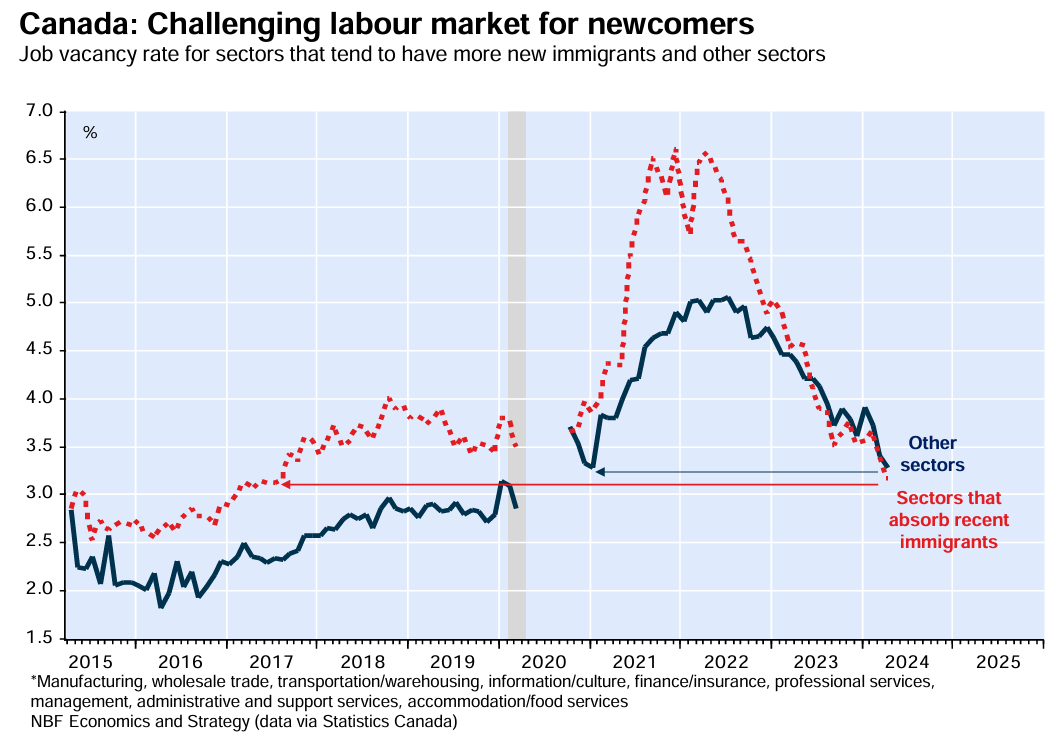
Indeed, the share of firms reporting labour shortages has fallen to just 15%—a level typically commensurate with a recession. Moreover, the number of firms forecasting lower wage increases than last year far outnumbers those forecasting higher wage increases.

In short, Canada’s economy looks okay on an aggregate GDP level. But when you peel back the layers and adjust for population growth, living standards are collapsing.
Indeed, real per capita GDP is tracking at a similar level to a decade ago:
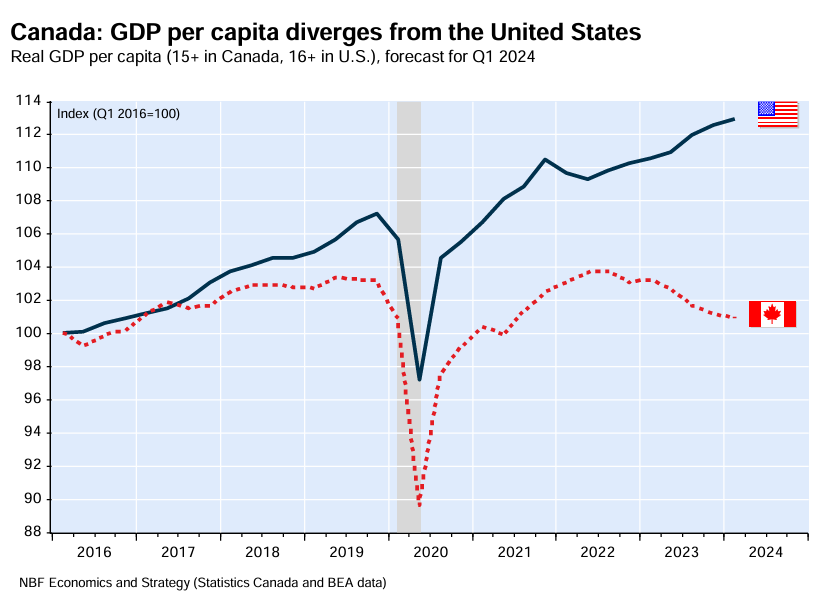
Australia is experiencing a similar phenomenon, with overall real GDP growing due to historically high population growth (net overseas migration), but real per capita GDP shrinking for five consecutive quarters to Q1 2024:
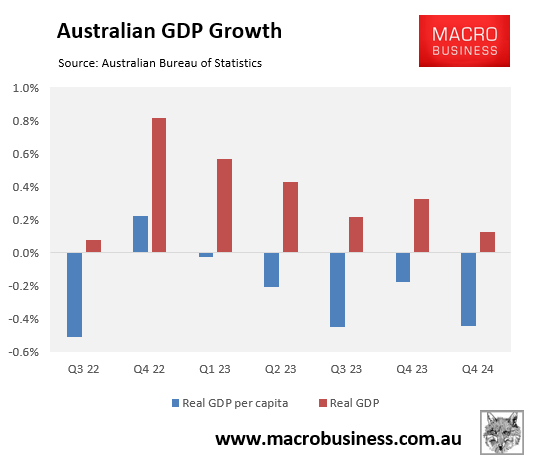
On Wednesday, the Australian Bureau of Statistics (ABS) will release the national accounts for Q2 2024, which is expected to record soft growth of 0.2% to 0.3% and a sixth consecutive decline in per capita GDP of around 0.4% for the quarter.

The annual growth rate in aggregate real GDP is also expected to fall to its slowest pace since the early 1990s recession.
Meanwhile, Australia’s labour market continues to soften, with job ads shrinking and the unemployment rate trending higher:
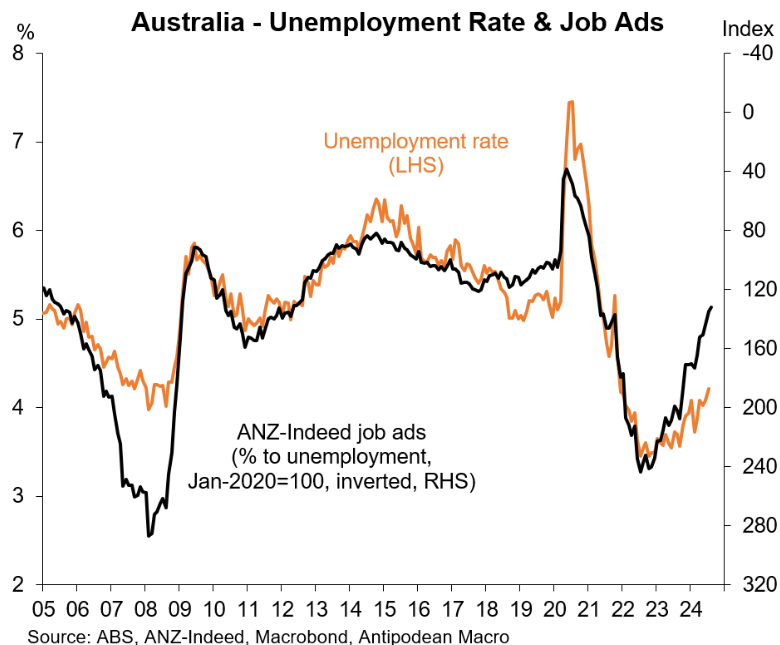
The situation in the private sector is especially bad, with almost all of Australia’s job growth coming from the non-market, government-related sector in areas like the NDIS and aged care:

Meanwhile, Australian real wages have fallen to mid-2010 levels:

Australia has also experienced one of the world’s sharpest declines in real per capita household disposable income over the past two years:
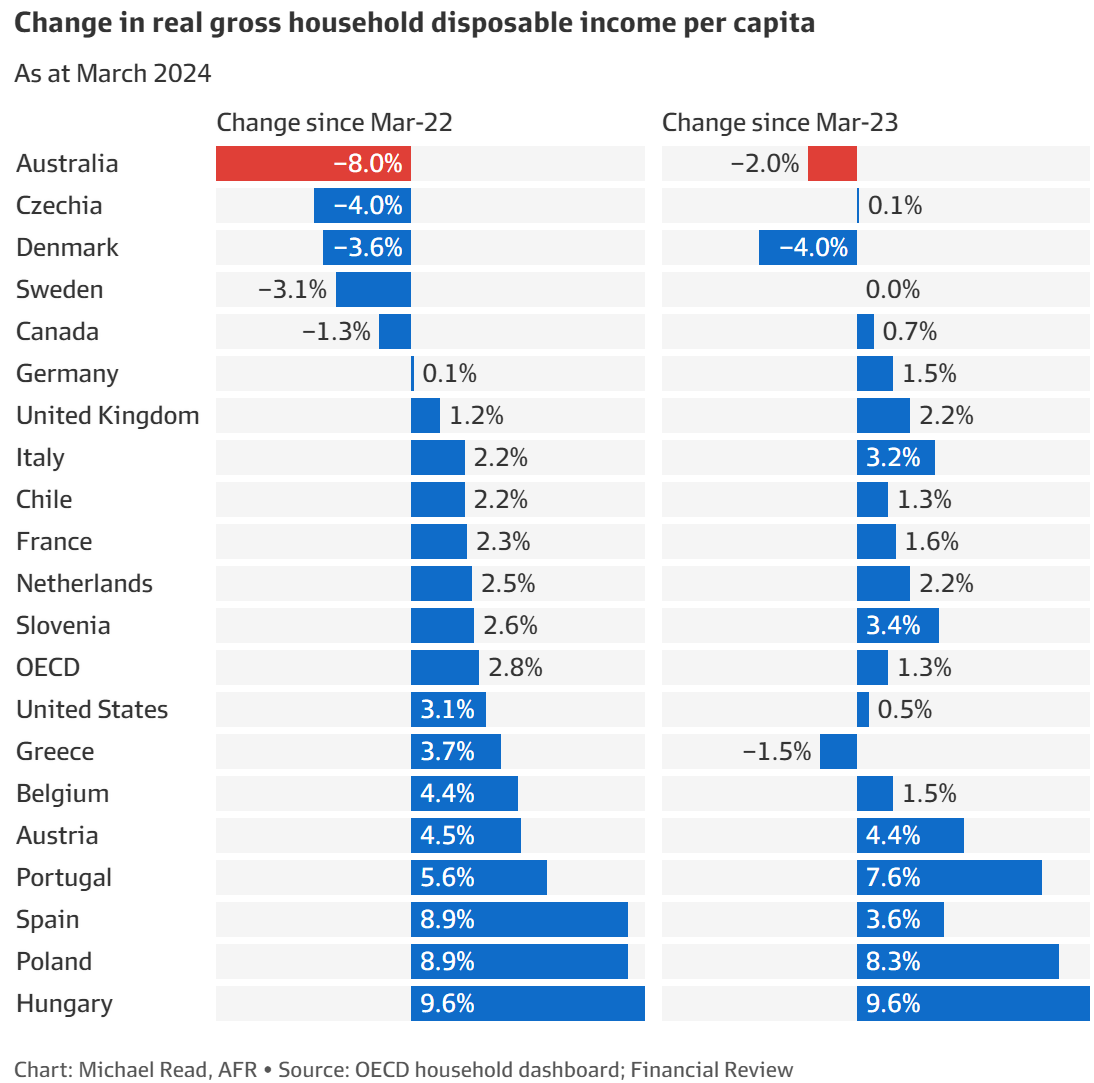
Like Canada, Australia’s economic performance is being flattered by historically high population growth (net overseas migration).
However, individual living standards are collapsing.

